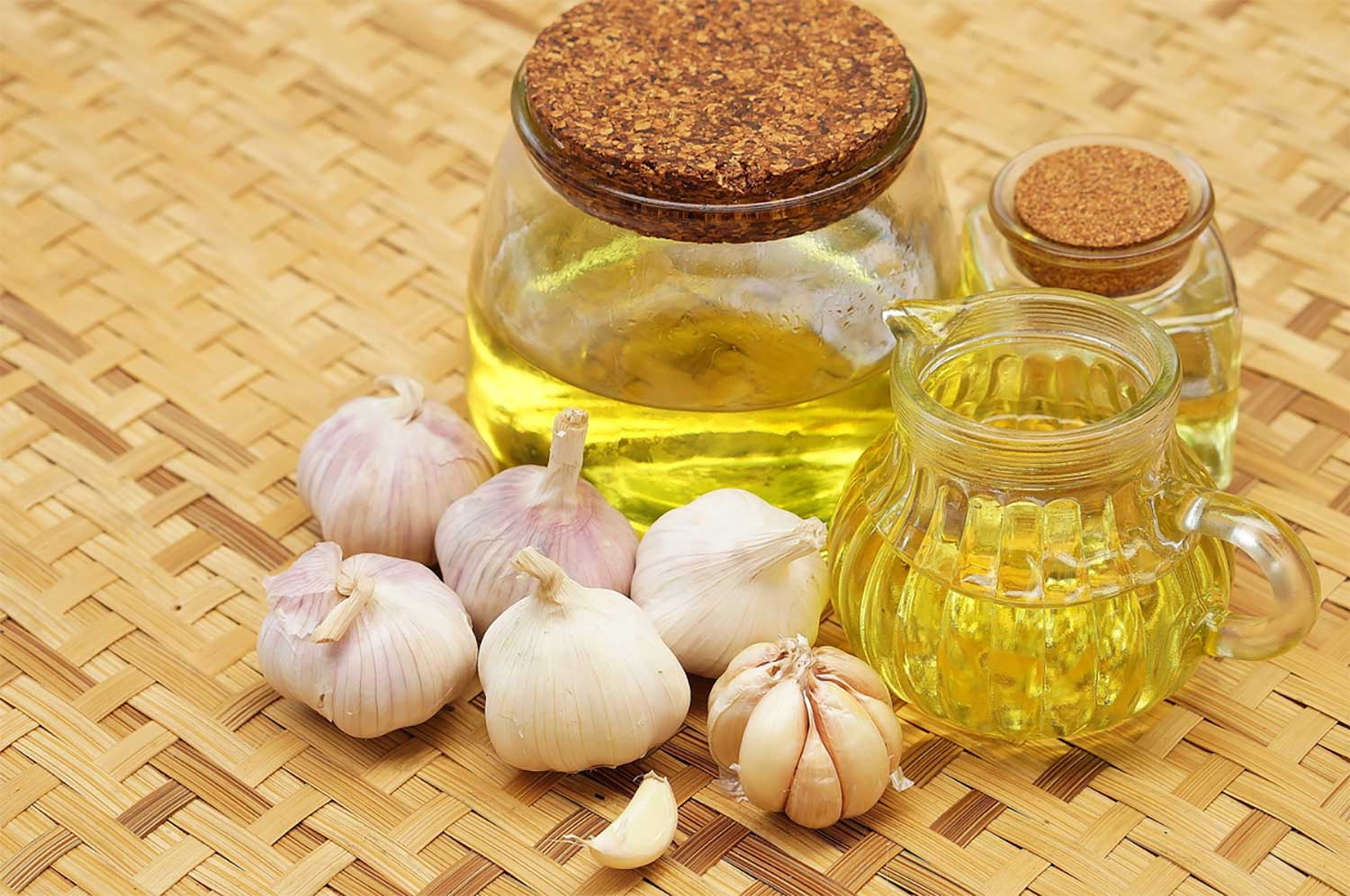What is garlic essential oil?
Allicin oil is a light yellow liquid with a strong garlic smell, insoluble in water and partially soluble in ethanol. Although the main components of garlic oil are sulfide compounds, the chemical properties are relatively stable and can withstand 120°C in a non-acidic environment. The above high temperature is not easy to decompose, but if it is exposed to ultraviolet light for a long time, it can induce decomposition. It is obtained by steam distillation of the bulbs of Liliaceae garlic (Allium sativum L.). It is a clear pale yellow to orange-red liquid. And strong irritating odor, like thiols. 1.050~1.0951.550~1.580. The main components are allyl propyl disulfide, diallyl disulfide, diallyl trisulfide, allicin, etc. Mainly produced in Egypt, China, and so on. It is mainly used for the preparation of spice seasonings, and also used in medicines such as disinfectants. Garlic oleoresin can be extracted from garlic bulbs by organic solvent and used in the food industry.
Active ingredient
Various volatile sulfur-containing compounds such as propyl propylene disulfide, dipropylene disulfide, dipropylene trisulfide, dipropylene sulfide, and methyl sulfide
Function and use
- Broad-spectrum antibacterial, strong antibacterial power
- Seasoning to attract food and improve feed quality
- Enhance immune function, and health care and promote growth
- Improve animal quality
- Detoxification and insect repellent, mildew-proof and fresh-keeping
- Non-toxic, no side effects, no drug residues, no drug resistance.
- Anti-coccidial effect.
- One of the raw materials for TNT explosives
Specific efficacy
- The natural tonic of the circulatory system in the body – lowers cholesterol and blood lipids, enhances the elasticity of blood vessels, reduces platelet aggregation and promotes blood circulation, and can prevent cardiovascular diseases such as thrombosis and hypertension.
- Prevent colds and apply to cold symptoms such as fever, pain relief, cough, sore throat, and nasal congestion.
- Activate the gastrointestinal mucosa, strengthen the stomach and intestines, promote appetite, and accelerate digestion.
- It can regulate blood sugar and prevent the onset of diabetes.
Precautions
- Do not mix with alkaline substances.
- Scaleless fish should be used with caution
Extraction process
The extraction process of garlic oil mainly includes steam distillation, solvent extraction, supercritical extraction, ultrasonic, microwave-assisted extraction, etc.
Steam distillation
The principle is to pass water vapor into an organic substance that is insoluble in water or insoluble in water but has certain volatility (garlic oil has certain volatility), so that the organic substance is distilled with water vapor at a temperature below 100 °C. out, and then further separated to obtain a purer substance. The general technological process of this method is: peeling garlic → washing → adding water and smashing → enzymatic hydrolysis → steam distillation → separation of oil and water → garlic oil.
Features
Steam distillation is one of the most commonly used methods because of its simple equipment, low cost, and good stability. However, due to the relatively high fermentation and distillation temperature, the activity of alliinase decreased, and allicin was lost, resulting in a lower oil yield. Moreover, the obtained garlic oil has a cooked smell, which is not fresh enough.
Solvent extraction
Garlic oil is slightly soluble in water and easily soluble in organic solvents such as ethanol, benzene, and ether. Using this property, garlic oil can be leached out with organic solvents. There is no obvious difference between the garlic oil obtained by this method and the garlic oil obtained by steam distillation. The choice of organic solvent is the key, and the solvent is required to have good solubility for garlic oil, easy separation after leaching, a significant difference in boiling point, and no other bad smells and solvent residues.
Solvent extraction process
The general process of the solvent method is: peeling garlic → washing → mashing → enzymatic hydrolysis → solvent extraction → distillation separation → recovery of solvent → garlic oil.
The supercritical CO2 extraction process
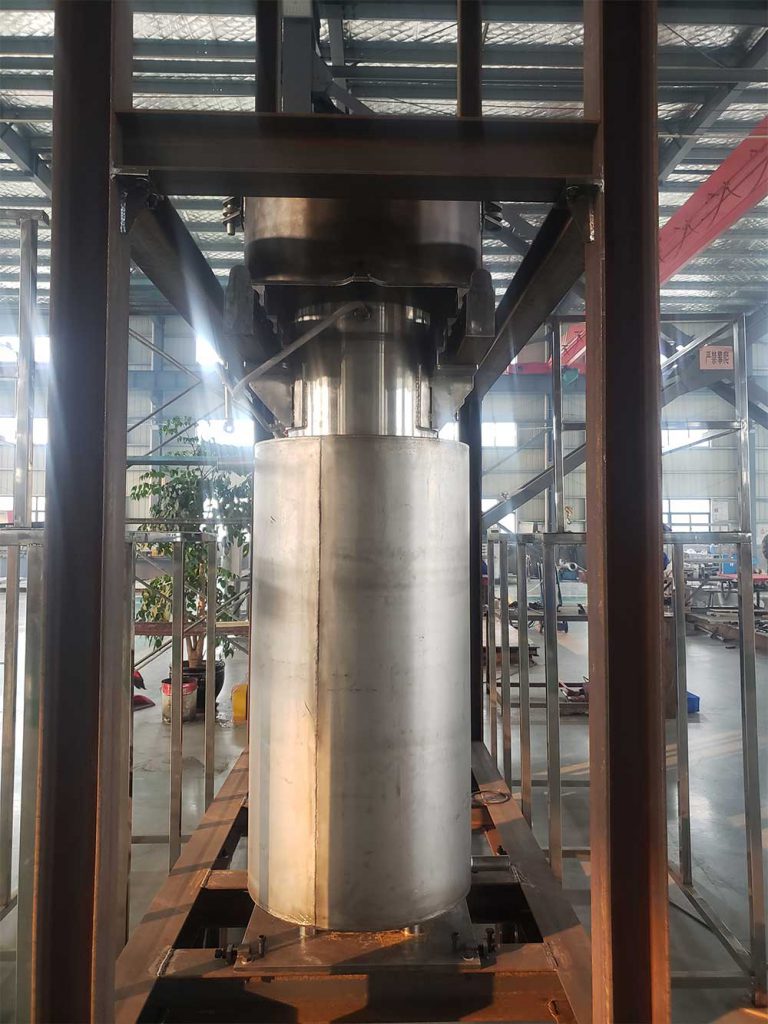
Supercritical CO2 extraction process technology is a new type of extraction and separation technology. This technology utilizes the characteristic that the fluid has abnormal phase equilibrium behavior and transfer performance with the solute to be separated in a certain region near the critical point, and the solubility of the solute changes with pressure and temperature, and fluctuates in a fairly wide range. A technique for solute separation. Because CO2 is non-toxic and cheap, it is often used as an extractant.
The CO2 extraction process of garlic oil
The general process of supercritical CO2 extraction of garlic oil is: peeling garlic → washing → smashing → filling extraction column → sealing → supercritical extraction → pressure reduction → garlic oil.
Ultrasound-Assisted Extraction
Ultrasonic extraction plays a prominent role in the extraction of active ingredients of natural products. Ultrasound can effectively break the cell boundary layer, increase the diffusion speed, improve the breaking speed, shorten the breaking time, and significantly improve the extraction efficiency. There is no chemical reaction during the extraction process, and the activity of the extracted biologically active substances is not reduced.
Microwave-assisted extraction
A microwave is an electromagnetic wave with a frequency range of 300 MHz to 300 000 MHz. Under the action of a microwave electric field, polar molecules continuously change their positive and negative directions at a rate of 2.45 billion times per second, resulting in high-speed collision and friction of molecules. high fever. In order to speed up the leaching speed of allicin and improve the leaching efficiency, many researchers use microwave-assisted extraction, and the results show that the effect is remarkable.
Application
Garlic oil is a broad-spectrum antibacterial substance with various pharmacological functions such as activating cells, promoting energy production, increasing antibacterial and antiviral abilities, accelerating metabolism, and relieving fatigue. Therefore, it has a wide range of applications in many fields.
Medical
In terms of medical treatment, allicin can be used to treat infectious diseases, digestive system diseases, oral diseases, cardiovascular and cerebrovascular diseases, etc., and has anti-aging, anti-metal poisoning, anti-cancer, and anti-cancer effects.
Breeding
In terms of breeding, allicin has an obvious feeding effect on animals, has bactericidal and antioxidant effects in the body, and can enhance the immune function of animals. Adding allicin to various animal feeds can increase the feed intake and feed conversion rate of animals, increase the survival rate of animals, reduce the incidence of disease, and improve the meat quality of animal products. It is a very valuable feed additive.
Plant
In terms of planting, allicin can be used for the control of crop pests and nematodes. Some companies are optimistic about the development prospects of allicin. In order to facilitate the use and increase the curative effect, they have developed allicin, allicin injection, allicin capsules, allicin effervescent tablets, garlic oil microcapsules, and garlic oil aerosol, garlic tincture, garlic liquid, garlic syrup, garlic flakes, garlic enema, garlic injection, etc.
Steam distillation method of extracting garlic oil
What to prepare for extracting garlic oil?
Reagent
Distilled water, Fe2+, allinase.
Equipment
Tissue masher, steam distillation device, condenser, oil-water separator, etc.
Method for extracting garlic oil
Raw material → pretreatment → enzymatic hydrolysis → steam distillation → separation of oil and water → garlic oil.
The extraction process of garlic oil
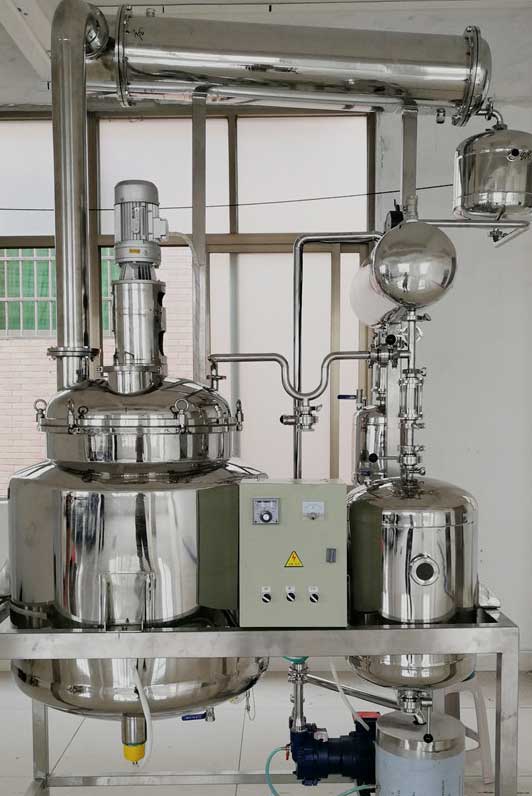
- Raw materials. Choose high-quality garlic that is ripe, free from pests and diseases, and free from mechanical damage
- Pretreatment. Soak the garlic in water, peel off the skin, wash it clean, and then add water to the tissue masher and mash it into a paste.
- Enzymolysis. Enzymatic hydrolysis is the key process to improving the yield of garlic oil. It uses alliance to decompose alliin to produce allicin. For this, the enzyme activator Fe22+ can be added. The enzymatic hydrolysis conditions are pH=6.5, the enzymatic hydrolysis temperature is granulated at 35 °C, the enzymatic hydrolysis time is 1 h, and the material-liquid ratio is 1:3, and the Fe2+ concentration is 10 mmol/L, and the yield is high. The extraction effect has a significant effect, while the effect of solid-liquid ratio, enzymatic hydrolysis time, and pH is not significant.
- Steam distillation. Put the mashed garlic pulp into the distillation device, and add water in the proportion of 3.5~4.5L of 1kg garlic and water. Then directly heated with steam, the garlic oil is continuously distilled with water vapor, and the distilled liquid is cooled by a water condenser.
- Separation of oil and water. After the distilled liquid is cooled by the condenser, the garlic oil (allicin) is separated through the water-oil separator, and the water still flows into the tank to maintain a constant water balance. After distillation and separation, garlic oil is obtained, and the yield is between 0.2% and 0.3% (0.1% to 0.2% without enzymatic hydrolysis).
Solvent leaching method of extracting garlic oil (one)
What to prepare for extracting garlic oil?
Reagent
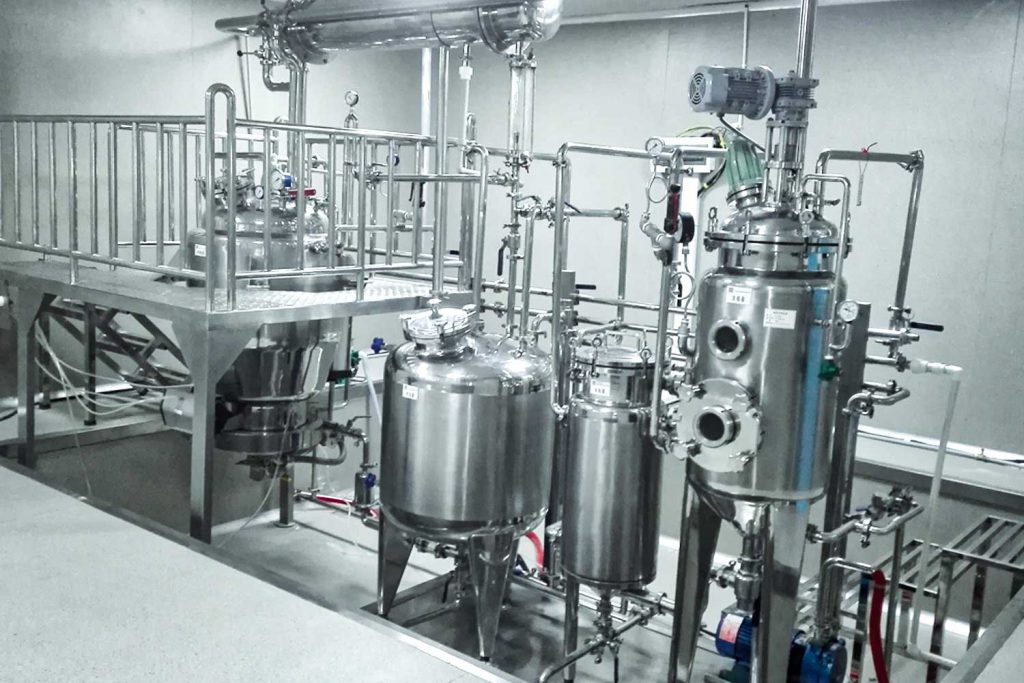
Distilled water, absolute ethanol.
Equipment
Centrifuges, vacuum concentrators, etc.
The extraction method of garlic oil
Raw material → pretreatment → extraction → filtration → concentration → purification treatment → garlic oil.
The extraction process of garlic oil
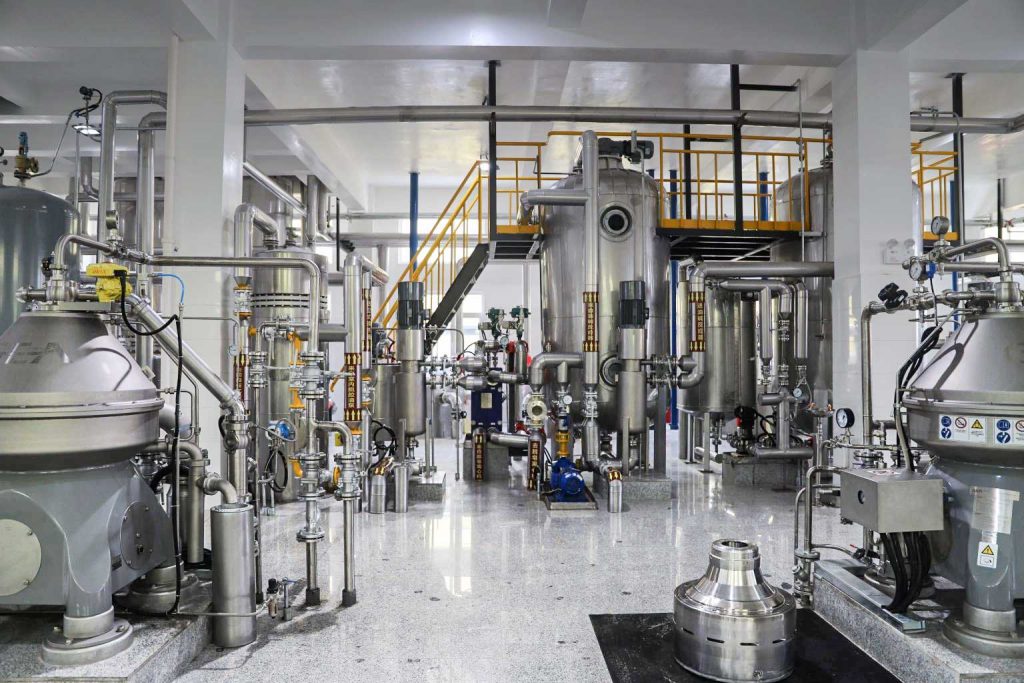
① Raw materials. Choose mature, pest-free, and mechanically damaged garlic.
②Pretreatment. Soak the garlic in water, peel off the skin, wash it clean, then centrifugally shake off the water or fully drain, and send it to a hot air dryer for hot air drying or drying in a homemade drying room. The drying temperature is controlled at 65-70 °C to fully remove the moisture from the garlic body. Crush the dried garlic, the particle size should not be too small, it is limited to broken rice.
③ leaching. Add 95% ethanol or anhydrous ethanol (the mass ratio of ethanol to garlic powder is 1:4~1:6) preheated to 65~75℃ to the crushed garlic powder. Stir to fully soak at this temperature.
④ filter. The extract is filtered. This process is very important, if the filtration is not thorough, it will cause trouble for the refining.
⑤ concentrated. The obtained filtrate is concentrated in vacuo to obtain garlic oil. When concentrating, the temperature should be controlled at 40~50℃, and the vacuum degree should be 0.08-0.10MPa. Pay attention to the recovery of the solvent. The recovered solvent can be reused for the next leaching or the previous leaching of garlic residue.
⑥ Purification treatment. The obtained garlic oil was purified to further remove the colloidal substances with protein. Directly pass water vapor into the garlic oil for 4~10min, and then carry out centrifugal separation (high-speed centrifuge is the best), take the surface oil, and dehydrate it to make garlic oil (allicin).
Solvent leaching method extract garlic oil (two)
What to prepare for extracting garlic oil?
Reagent
Distilled water, absolute ethanol.
Equipment
Vacuum concentrator, centrifuge, etc.
Extraction method of garlic oil
Raw material → pretreatment → leaching → filtration → filtrate heating and depreciation → concentration → purification treatment → garlic oil.
Extraction process of garlic oil
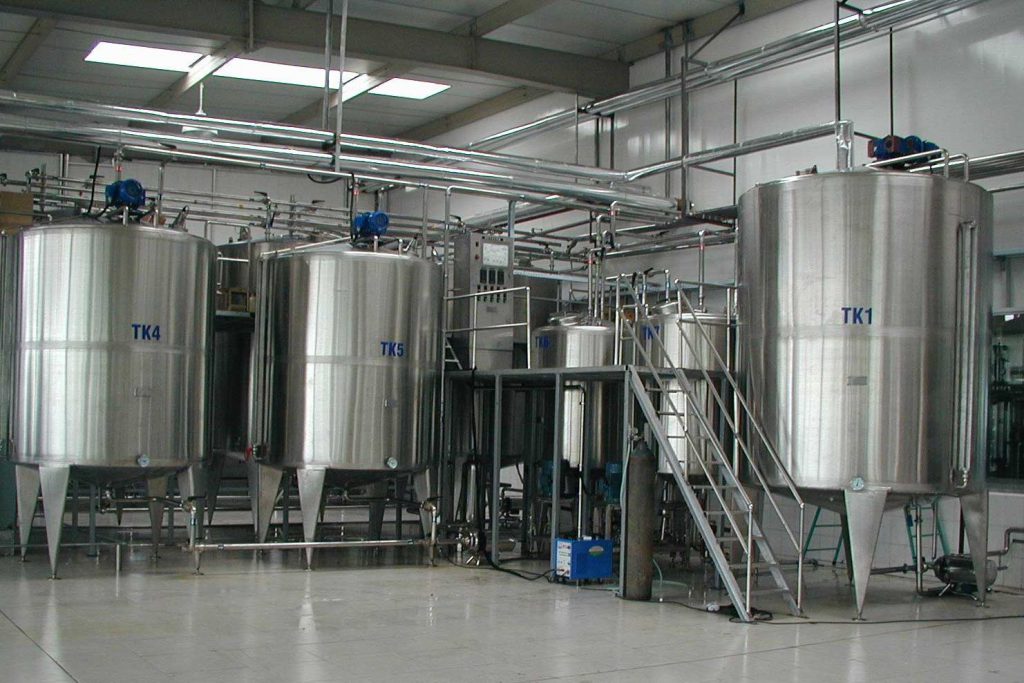
① Raw materials. Choose mature, pest-free, and mechanically damaged garlic.
②Pretreatment. Soak the garlic in water, peel off the skin, wash it clean, rinse it thoroughly, spin off the water by centrifugation, and smash the drained garlic, but not too finely.
③ leaching. Add 95% ethanol or absolute ethanol preheated to 65-75 ℃ for hot soaking, and it is best to keep the temperature constant during the soaking process.
④ filter. After fully leaching, separation and filtration (this filtration can be coarse filtration), and the filtrate is taken.
Leave the garlic residue to be re-leached until complete.
⑤ The filtrate is heated to remove sediment. Heat the filtrate to 70~80°C (or pass water vapor for 4~10min) until flocculent precipitation occurs in the filtrate, then filter out the precipitation (fine filtration is required for this filtration), and take the filtrate.
⑥ concentrated. The filtrate is concentrated in vacuo to obtain garlic oil. When concentrating, the temperature is controlled at 40~50℃, and the vacuum degree is at 0.08~0.10MPa. Pay attention to the recovery of the solvent, and the recovered solvent can be reused for the next leaching or the previous leaching of garlic residue.
⑦Purification treatment. The obtained garlic oil was purified to further remove the protein-based colloidal substances. Directly pass water vapor into the garlic oil for 4~10min, and then carry out centrifugal separation (high-speed centrifuge is the best), take the surface oil, and dehydrate it to make garlic oil (allicin)
Supercritical CO2 extraction of garlic oil
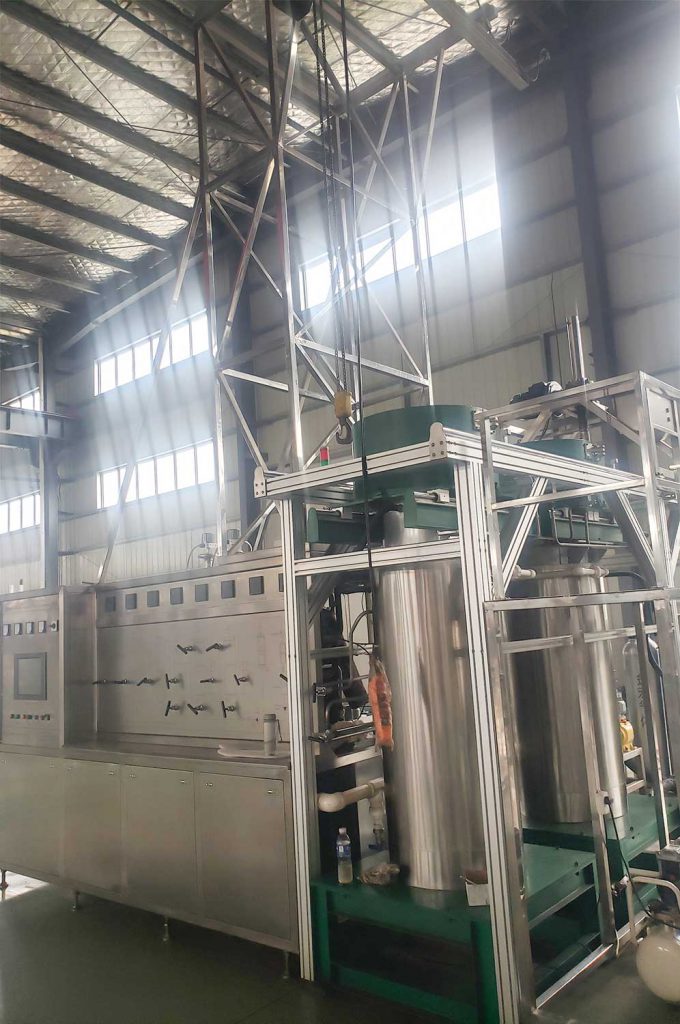
Prepare for extracting garlic oil
Reagent
Distilled water, CO2.
Equipment
Supercritical CO2 Extraction Equipment
CO2 extraction method of garlic oil
Raw material → pretreatment → supercritical CO2 extraction → garlic oil.
CO2 Extraction Process of Garlic Oil
① Raw materials. Choose mature, pest-free, and mechanically damaged garlic.
②Pretreatment. After the inspection, the garlic heads that have passed the inspection are divided and the stems are removed. Soak the garlic in water, peel off the skin, rinse thoroughly and drain. Mash the garlic with a masher and process it until it becomes pulpy or granulated.
③ supercritical CO2 extraction. Put the processed pulp or granular garlic into the extraction kettle, open the CO2 cylinder, let the CO2 enter the diaphragm compressor through the filter, pressurize it to the required pressure, and then send it to the buffer tank, and then enter the preheater through the pressure regulating valve. . CO2 is preheated to the working temperature, kept warm and entered into the extraction kettle for extraction. The CO2 dissolved with garlic extract (garlic oil) comes out of the extraction kettle and is reduced to normal pressure through a pressure-reducing valve, CO2 loses its ability to dissolve, and the extract is released in the sampling bottle. Then CO2 escaped from the sampling bottle, emptied through the accumulating flowmeter, and the CO2 was recovered and used after purification. The optimum process conditions for CO2 extraction of garlic oil are: extraction pressure 14~16Mpa, extraction temperature 34~36℃, flow rate 2L/min, extraction time within 5h, and the collected material in the sampling bottle is garlic oil.
Supercritical CO2 extraction of garlic oil
Prepare for extracting garlic oil
Reagent
Distilled water, CO2.
Equipment
Supercritical CO2 Extraction Equipment
CO2 extraction method of garlic oil
Raw material → pretreatment → supercritical CO2 extraction → garlic oil.
CO2 Extraction Process of Garlic Oil
① Raw materials. Choose mature, pest-free, and mechanically damaged garlic.
②Pretreatment. After the inspection, the garlic heads that have passed the inspection are divided and the stems are removed. Soak the garlic in water, peel off the skin, rinse thoroughly and drain. Mash the garlic with a masher and process until it becomes pulpy or granulated.
③ supercritical CO2 extraction. Put the processed pulp or granular garlic into the extraction kettle, open the CO2 cylinder, let the CO2 enter the diaphragm compressor through the filter, pressurize it to the required pressure, and then send it to the buffer tank, and then enter the preheater through the pressure regulating valve. . CO2 is preheated to the working temperature, kept warm and entered into the extraction kettle for extraction. The CO2 dissolved with garlic extract (garlic oil) comes out of the extraction kettle and is reduced to normal pressure through a pressure reducing valve, CO2 loses its ability to dissolve, and the extract is released in the sampling bottle. Then CO2 escaped from the sampling bottle, emptied through the accumulating flowmeter, and the CO2 was recovered and used after purification. The optimum process conditions for CO2 extraction of garlic oil are: extraction pressure 14~16Mpa, extraction temperature 34~36℃, flow rate 2L/min, extraction time within 5h, and the collected material in the sampling bottle is garlic oil.

